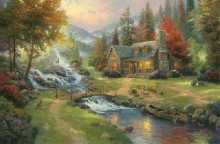It's not that “those who don't remember the past are condemned to repeat it.” The past will repeat itself, because (as Roman emperor and Stoic philosopher Marcus Aurelius warned us many centuries ago) human follies remain the same over time. But the study of history is a tool, and we can use that tool in more than one way. We can use it to lie to ourselves and romanticize some imaginary idealized past- and by doing so, we'll help create an awful present. Or we can use it to try to understand what really happened, as complex and multifaceted as it might be. And when we try to do that, we often find that just being exposed to history gives us a different perspective on the present- a perspective in which we fully understand that evil must be resisted, no matter how ancient and no matter how respected.
